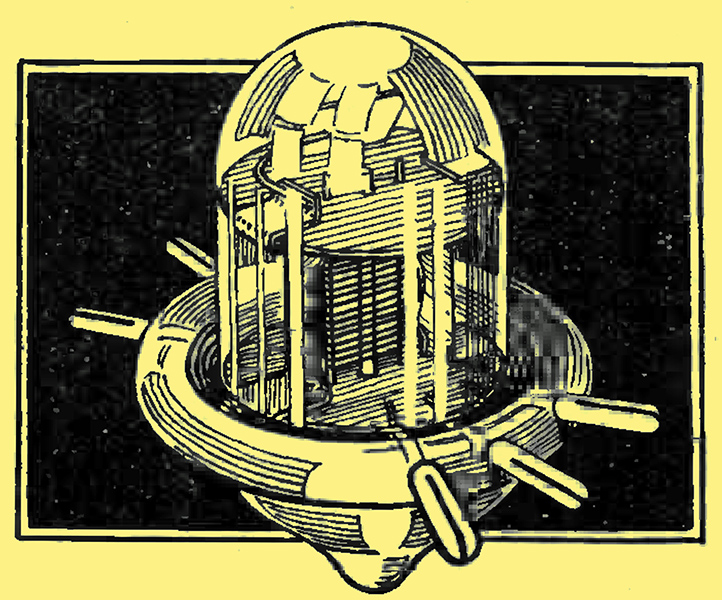|
An American development for ultra short waves.

To show the construction of the Acorn valve.
It is well known that successful reception on the ultra-short wavelengths demands careful attention to detail in receiver design, but although ordinary valves can be used on wavelengths around 5 metres, there is a definite limit in wavelength below which they cannot be employed. It has been shown [★] Vacuum Tubes of Small Dimensions for Use at Extremely High Frequencies, by B J Thompson and G M Rose, Jun. Proc. IRE, December, 1933. that if the dimensions of a valve are reduced it can function at lower wavelengths, and so the logical step in ultra-short wave-length technique is to employ specially small valves of minute physical dimensions. The September issue of Electronics contains details of the first type of ultra-short wavelength valve, and it is known as the Acorn valve in view of its astonishingly small size. It is an indirectly heated triode rated for 6.3 Volts at 0.16 A and for a 180 Volts HT supply, its heater rating being chosen so that the valve may be used for AC or battery operation. It has an internal resistance of 12,500Ω and a mutual conductance of 2 mA/V., and it passes an anode current of 4.5 mA. with a grid bias of 5 Volts.
The construction is one leading to very small inter-electrode capacities; the grid-cathode capacity is 1 pF, the anode-cathode 0.6 pF, and the grid-anode capacity only 1.4 pF. This is obtained through the small dimensions of the electrodes and the absence of the usual pinch. No base is fitted, and the connections are made to metal stubs set around the periphery of a glass ring. As shown in the drawing, these stubs support the electrodes, and some idea oi the smallness of the valve may be gathered when it is said that its overall height is less than one inch, while the diameter around the ring is under ¾in. The diameter of the bulb is about ½ in.
The valve is being developed in the Radiotron Laboratories, and it is understood that successful operation has been secured at as high a frequency as 600 MHz (0.5 metres). Previously operation at such frequencies has only been possible with the Barkhausen oscillator, and the ability to employ ordinary circuit technique represents a big step forward in this important branch of radio development.
|